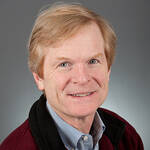
26 Aug Autism: Study Sheds Light on Genetic Variants and Neurodevelopment Mechanisms
MedicalResearch.com Interview with:

Dr. Dias
Caroline Dias, M.D., Ph.D.
Assistant Professor, Pediatrics-Developmental Pediatrics
University of Colorado Anschutz Medical Campus

Dr. Walsh
Christopher Walsh, M.D., Ph.D.
Chief, Division of Genetics and Genomics
Bullard Professor of Pediatrics and Neurology at Harvard Medical School
and researcher who has used material donated to the brain bank
MedicalResearch.com: What is the background for this study?
Response: Many different types of genetic variants contribute to neurodevelopmental disorders such as autism. Copy number variants are large pieces of genetic material that are duplicated or deleted. We have known for many years that many copy number variants at certain genetic locations are linked to autism. Because these copy number variants may include lots of different genes, it has been difficult to understand how these copy number variants alter human brain function. Furthermore, although animal models are important, autism is in many ways defined by differences in uniquely human cognitive and social functioning. Better understanding of how these copy number variants change human brain function will shed light on universal mechanisms that regulate neurodevelopment. We studied a copy number variant called dup15q, that is associated with almost 40-fold higher rates of autism vs. the general population. We studied post-mortem human brain tissue from individuals with dup15q, individuals with autism not related to dup15q, and neurotypical controls, to better understand how the human brain is impacted by dup15q. We focused on frontal cortex, an important brain region in executive function and social perspective taking. We applied cutting edge techniques that allow us to assess individual cells in the brain.
MedicalResearch.com: What are the main findings?
Response: We made some remarkable findings, including that although this genetic change was present in all cells, different cell types in the brain seemed to respond differently. Specifically, neurons, key communicating cells of the brain, demonstrated more pronounced dysregulation of the critical dup15q genomic region as compared to other cell types. Although in dup15q there are increased copies of genes within the duplicated region, this did not translate directly to changes in gene expression. Rather, different cell types seemed to regulate the copy number variant differently. It would have been hard to predict this without being able to study the human brain directly.
We also compared dup15q tissue to tissue from individuals with an autism diagnosis not related to dup15q. We found important similarities and differences. For example, the genetic landscape of autism and dup15q cases looked very distinct. And yet, there were certain common biological processes that were dysregulated, suggestive of convergent developmental processes. We also found that microglia, a key brain inflammatory cell type, seemed to demonstrate evidence of unique dysregulation in dup15q cases. Microglia are being increasingly examined in neurodevelopment, and our work contributes to better understanding of their role in this context.
MedicalResearch.com: Can this gene duplication error be detected in vitro?
Response: Although dup15q is individually a rare occurrence, this variant is detected in genetic tests that are undertaken clinically in autism evaluations (tests called chromosomal microarrays that detect lots of different copy number variants), and knowing the genetic variant associated with a neurodevelopmental diagnosis can be important for families and their clinical care teams in tailoring their medical care. This is why genetic evaluation (more generally, not just for dup15q) is an important component of autism management.
There are models that have incorporated dup15q both in cellular systems, such as human induced pluripotent stem cells, and mouse models. These approaches complement the work presented here. However, there are differences in different species or cell types, that make studying the duplication in human brain tissue directly extremely valuable.
MedicalResearch.com: What should readers take away from your report?
Response: This study contributed to better understanding of two important areas, one, human genetics and how copy number variants behave in the human brain. This is important because there are many copy number variants that are associated with neurodevelopmental and neuropsychiatric diagnoses, and our study shows how important it is to study these enigmatic variants directly in the tissue of interest in an unbiased approach.
The second is that we shed light on biological mechanisms in neurodevelopment. While we replicated many past findings, we also made new discoveries that could open the gateway to totally new areas of investigation.
Although the neurobiology of autism is complex, the direct study of human tissue is an important tool in our scientific armory. This work would not have happened without the use of post-mortem human brain tissue, which was in turn made possible thanks to the generosity of individuals, their families, and the tissue banks, like Autism BrainNet, and the NIH NeuroBioBank, that distribute this resource to the scientific community.
MedicalResearch.com: What recommendations do you have for future research as a results of this study?
Response: I am excited to see how the data generated from this study can assist those developing new treatments for dup15q. For example, dup15q is associated with high rates of seizures, and better understanding of the cellular effects of this copy number variant in human brain could open the door for rationally designed precision therapeutics, for example, in developing targeted approaches to seizure management.
I am also interested in better understanding how and why different cells respond differently to dup15q more broadly. Better understanding of these mechanisms could have broader implications for dup15q management and treatment.
MedicalResearch.com: Is there anything else you would like to add?
Response: I think it’s notable that other groups have also leveraged the invaluable resource of human brain tissue (Wamsley et al. 2024, Perez et al. 2023). Each group had unique perspectives and expertise that led to complementary and synergistic discoveries. This reinforces the point above at how important it is that this resource is made widely accessible to the research community.
Citations:
https://www.sciencedirect.com/science/article/pii/S000292972400226X?via%3Dihub
https://www.science.org/doi/10.1126/science.adh2602
https://www.biorxiv.org/content/10.1101/2023.09.22.559056v1
Disclosures:
Dr. Dias: No disclosures
Dr. Walsh: Dr. Walsh is a consultant to Regeneron Pharmaceuticals (cash), Bristol-Meyers Squibb (cash), Maze Therapeutics (cash, equity), Flagship Ventures (cash), and Third Rock Ventures (cash). None have any relationship to this work.
The information on MedicalResearch.com is provided for educational purposes only, and is in no way intended to diagnose, cure, or treat any medical or other condition.
Some links may be sponsored. Products are not warranted or endorsed.
Always seek the advice of your physician or other qualified health and ask your doctor any questions you may have regarding a medical condition. In addition to all other limitations and disclaimers in this agreement, service provider and its third party providers disclaim any liability or loss in connection with the content provided on this website.
Last Updated on August 26, 2024 by Marie Benz MD FAAD
